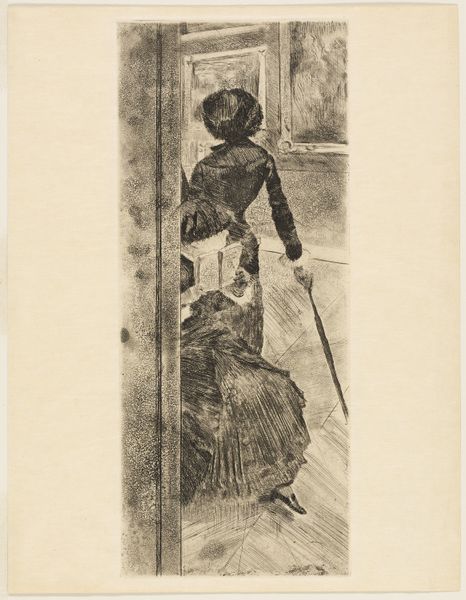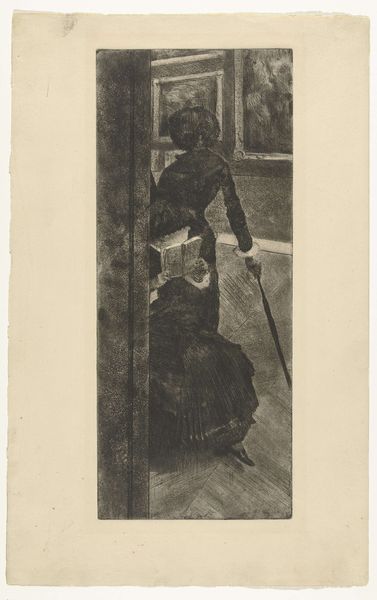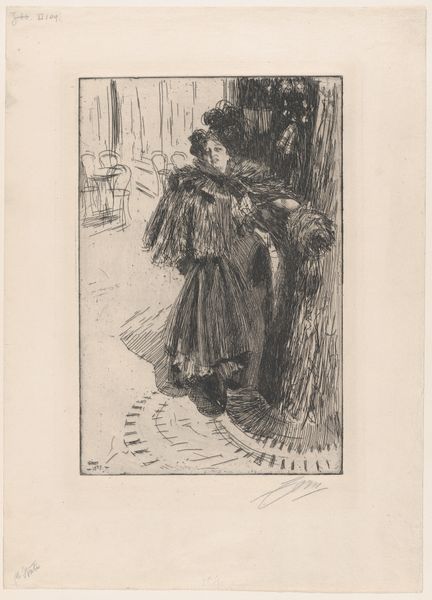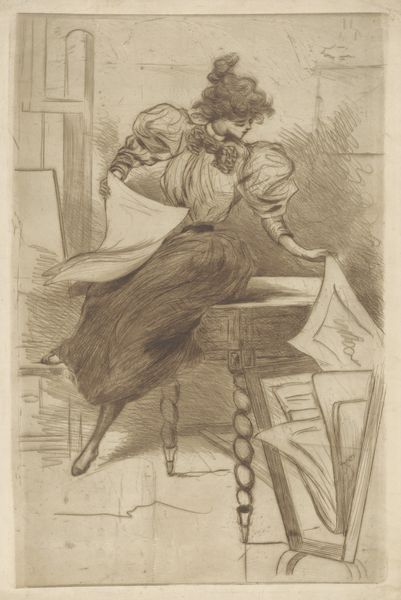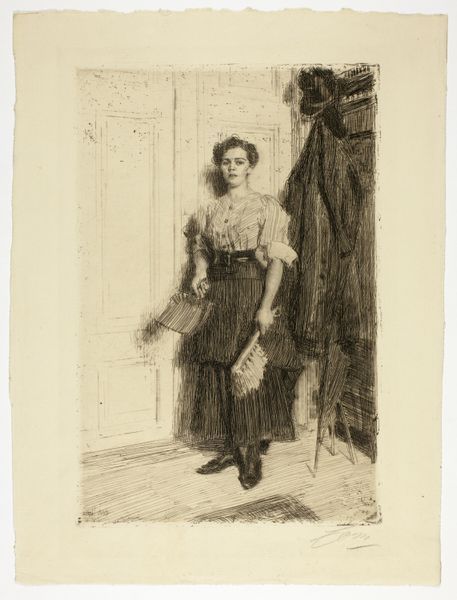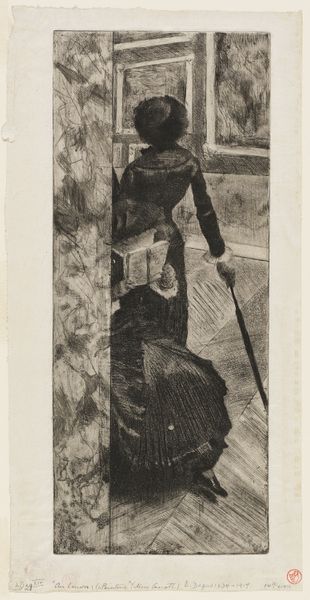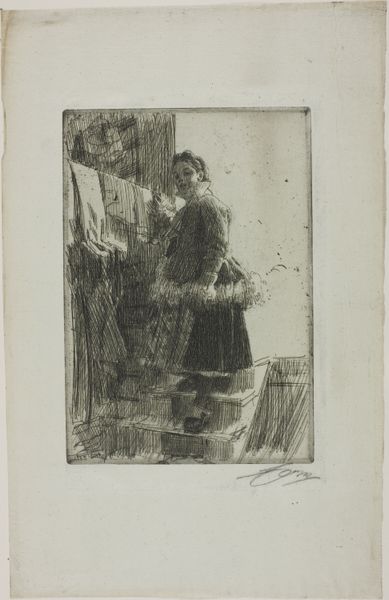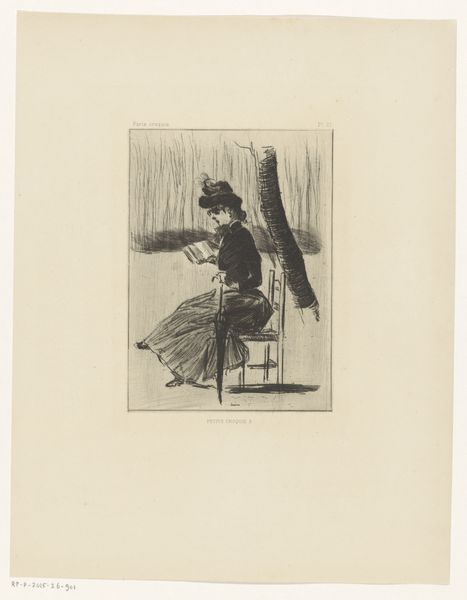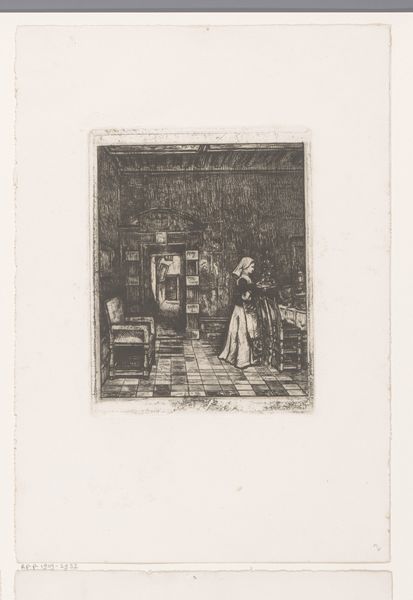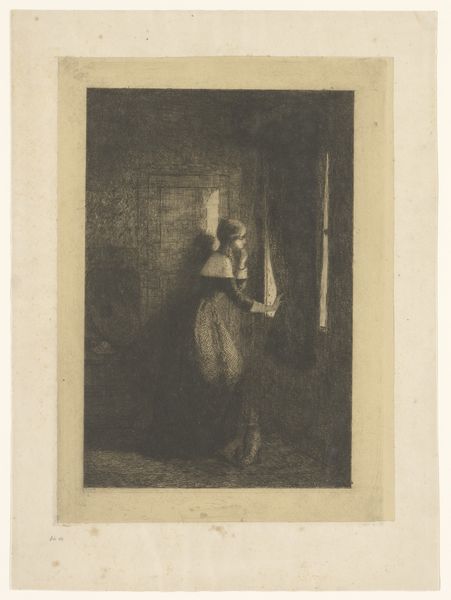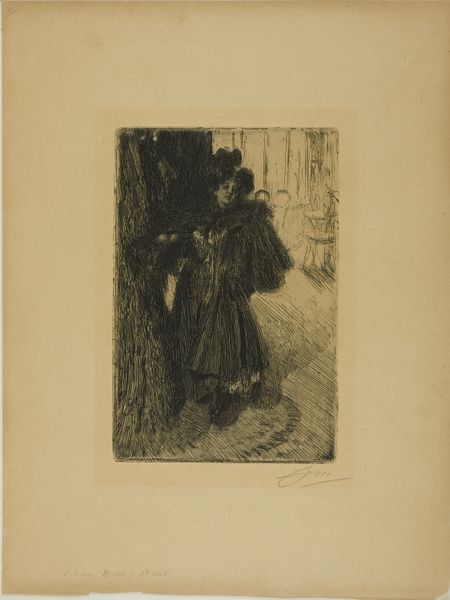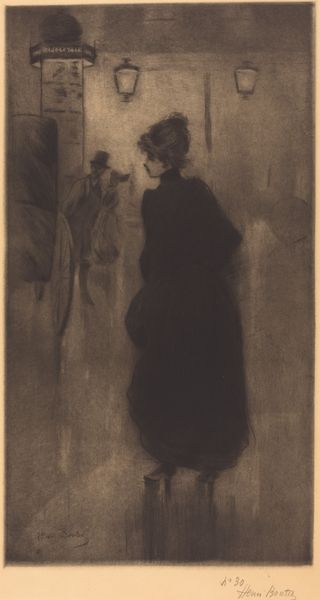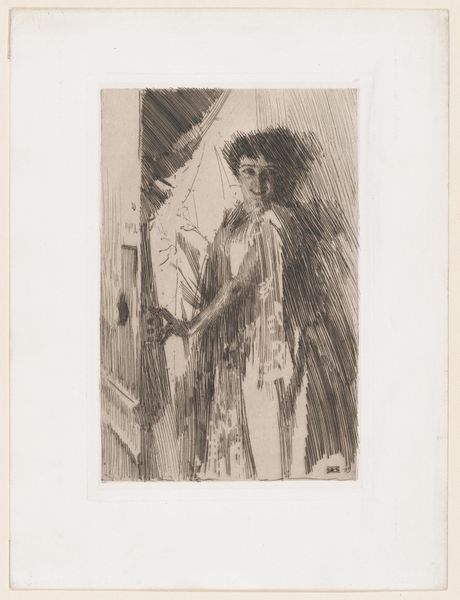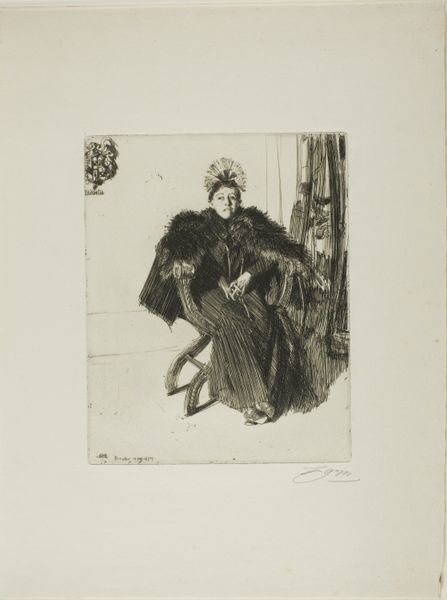
aquatint, print, etching
#
portrait
#
aquatint
# print
#
impressionism
#
etching
#
figuration
#
line
Dimensions: 302 mm (height) x 126 mm (width) (Plademål)
Edgar Degas made this etching of Mary Cassatt at the Louvre using a metal plate, acid, and ink. The image is made from tiny etched lines, a process that requires skill and patience. Look at the way Degas has used line to describe the scene. See how the density of the lines creates darker areas, suggesting shadows and forms. The texture of the etching gives the print a unique quality, quite different from a drawing or painting. The etching process was part of a broader printmaking culture that democratized art in the 19th century. It allowed for the reproduction and distribution of images, making art more accessible to a wider audience. The labor involved in creating an etching—from preparing the plate to printing the final image—highlights the value of skilled craftsmanship. Considering the materials and processes used by Degas helps us understand this artwork as more than just a picture; it's a testament to the artist's skill, and the social and cultural context of its creation.
Comments
No comments
Be the first to comment and join the conversation on the ultimate creative platform.
